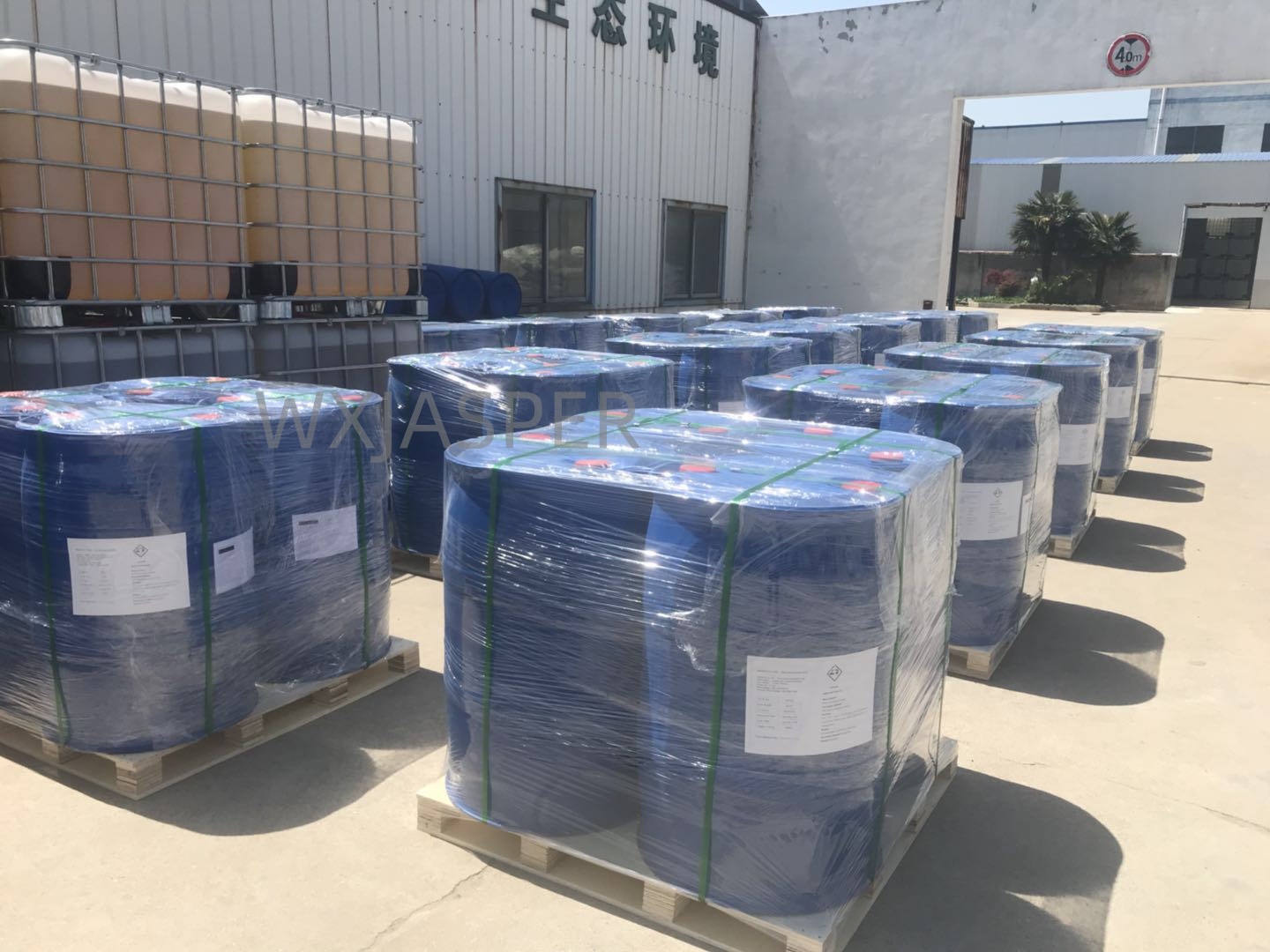Product Details
CasNo: 99734-09-5
MF: C30H24O.(C2H4O)n
Appearance: liquid
Delivery Time: 15 days
Packing: 200kg/drum
Purity: 99%
1. Core Basic Information
- Product Name
- Chinese: Fatty Alcohol Ether Sulfate Derivative (Anionic Surfactant)
- English: Fatty Alcohol Ether Sulfate Derivative
- Brand Affiliation: Roquette Soprophor® Series
- Manufacturer: Roquette Group – a leading global plant-based raw material enterprise, with core businesses covering starch derivatives, plant proteins, and specialty chemicals. Its surfactant products are characterized by "high bio-based content and environmental friendliness".
- Chemical Properties
- Type: Anionic surfactant (HLB value approximately 11-14, suitable for both oil-in-water/O/W and water-in-oil/W/O emulsification systems)
- Appearance: Colorless to slightly yellow transparent liquid at room temperature, with no obvious pungent odor.
- Solubility: Easily soluble in water (solubility ≥ 400g/L at 25℃), dispersible in polar solvents such as ethanol and propylene glycol, insoluble in non-polar solvents such as kerosene and paraffin.
- Ionic Characteristics: Dissociates into negatively charged sulfate ions in aqueous solution, with strong surface activity and easy charge interaction with cationic substances.
2. Key Performance and Characteristics
- Core Functions: Possesses high-efficiency emulsifying, dispersing, and wetting properties. It can quickly reduce liquid-liquid and solid-liquid interfacial tension. It can still stably suspend particles or emulsions in high-salt and high-pH environments, preventing stratification and sedimentation.
- Stability Performance
- Chemical Stability: No performance attenuation in the pH range of 2-13, resistant to strong acids and alkalis; resistant to hard water (no precipitation when calcium and magnesium ion concentration ≤ 1000ppm), and not prone to hydrolysis at high temperatures (≤90℃).
- Compatibility: Can be compounded with nonionic and amphoteric surfactants to synergistically enhance efficacy; mixing with cationic surfactants is prone to flocculation, and the proportion needs to be controlled (cationic proportion is recommended to be ≤5%).
- Safety and Environmental Friendliness
- Toxicity: Acute oral toxicity LD50 > 5000mg/kg (practically non-toxic level), skin irritation score ≤ 0.3 (rabbit skin irritation test), in compliance with EU EC 1223/2009 Cosmetics Regulation.
- Environmental Friendliness: Biodegradation rate ≥ 95% (OECD 301F standard), bio-based carbon content ≥ 60% (in compliance with EU bio-based product certification), with no environmental residue risk after use.
3. Main Application Fields
- Agricultural Field (Core Scenario)
- Pesticide Emulsifier: Used as a compound emulsifier for herbicides and insecticides, suitable for EC and SC formulations, improving the dispersion uniformity of active ingredients and reducing pesticide dosage by 10%-15%.
- Foliar Fertilizer Additive: Used in trace element foliar fertilizers, enhancing the wetting and penetration of nutrients on the leaf surface, and increasing absorption efficiency by more than 30%.
- Industrial Field
- Coating Dispersant: Used in water-based industrial coatings and anti-corrosion coatings, reducing the grinding particle size of pigments such as titanium dioxide and carbon black, and improving coating storage stability (no stratification after standing for 6 months).
- Metal Cleaning Agent: As the main active ingredient of degreasing cleaners, it quickly decomposes mineral oil and cutting oil in mechanical processing, and has no corrosion on non-ferrous metals such as aluminum and copper.
- Daily Chemical Field
- Personal Care Products: Used in mild body washes and shampoos, replacing traditional sodium lauryl sulfate (SLES), reducing skin irritation, and improving foam fineness.
- Household Cleaning: Used in dishwashing detergents, enhancing oil-stain emulsifying ability, and maintaining good fluidity even at low temperatures (5℃).
4. Specifications, Packaging, Storage and Transportation
- Technical Specifications
- Active Ingredient Content: 70% ± 2% (high-concentration liquid type, reducing transportation costs).
- pH Value (1% Aqueous Solution): 6.5-7.5 (neutral range, suitable for most formulation systems).
- Sodium Sulfate Content: ≤ 1.0% (low impurity content, avoiding impact on product transparency).
- Foam Height (Ross-Miles Method): ≥ 180mm (after 5min), with excellent foam stability.
- Packaging Specifications
- Conventional Packaging: 200L HDPE acid and alkali-resistant plastic drums (with leak-proof lids), 1000L IBC totes (lined with food-grade PE bags).
- Customized Packaging: 20L small-sized drums are provided for daily chemical customers, facilitating laboratory research and small-batch production.
- Storage and Transportation Requirements
- Storage: Store in a cool (5-35℃), dry, and ventilated place, sealed for preservation; avoid direct sunlight to prevent degradation of active ingredients due to high temperatures.
- Transportation: Transport as non-hazardous chemicals (UN number UN3082, environmental hazardous substance category), avoiding packaging collision and damage.
- Shelf Life: 24 months in unopened condition (for products beyond the shelf life, the active ingredient content needs to be tested, and those with ≥ 65% can continue to be used).
5. Product Advantages
- Wider Scenario Adaptability: The only fatty alcohol ether sulfate product that can stabilize both O/W and W/O systems simultaneously. There is no need to replace emulsifiers for different formulations, reducing customers' formulation costs.
- Prominent Bio-based Attribute: The bio-based carbon content exceeds 60%, far higher than the industry average (30%-40%), helping customers' products obtain "green certifications" (such as EU ECOCERT).
- Excellent Low-temperature Performance: The freezing point is as low as -2℃, and it can be used normally in northern regions in winter without heating, reducing customers' production energy consumption.


